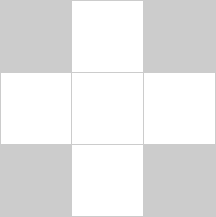
i
i
i
i
i
i
i
i
References
Adelson, E. H. (1999). Lightness Perception and Lightness Illusions. In M. S.
Gazzaniga (Ed.), The New Cognitive Neurosciences (Second ed., pp. 339–
351). Cambridge, MA: MIT Press.
Adzhiev, V., Cartwright, R., Fausett, E., Ossipov, A., Pasko, A., & Savchenko,
V. (1999, Sep). Hyperfun Project: A Framework for Collaborative Multi-
dimensional F-rep Modeling. In Implicit Surfaces ’99 (p. 59-69). Aire-la-
ville, Switzerland: Eurographics Association.
Akenine-M¨oller, T., Haines, E., & Hoffman, N. (2008). Real-Time Rendering
(Third ed.). Wellesley, MA: A K Peters.
Akkouche, S., & Galin, E. (2001). Adaptive Implicit Surface Polygonization
Using Marching Triangles. Computer Graphics Forum, 20(2), 67–80.
Akleman, E., & Chen, J. (1999). Generalized Distance Functions. In Proceedings
of the International Conference on Shape Modeling and Applications (pp.
72–79). Washington, DC: IEEE Computer Society.
Amanatides, J., & Woo, A. (1987). A Fast Voxel Traversal Algorithm for Ray
Tracing. In Proceedings of Eurographics (pp. 1–10). Amsterdam: Elsevier
Science Publishers.
Amar, R., Eagan, J., & Stasko, J. (2005). Low-Level Components of Analytic
Activity in Information Visualization. In Proc. IEEE Symposium on In-
formation Visualization (InfoVis) (pp. 111–117). Washington, DC: IEEE
Computer Society.
American National Standard Institute. (1986). Nomenclature and Definitions for
Illumination Engineering. ANSI Report (New York). (ANSI/IES RP-16-
1986).
721
i
i
i
i
i
i
i
i
722 References
Angel, E. (2002). Interactive computer graphics: A top-down approach with
opengl (Third ed.). Reading, MA: Addison-Wesley.
Appel, A. (1968). Some Techniques for Shading Machine Renderings of Solids.
In Proceedings of the AFIPS Spring Joint Computing Conference (Vol. 32,
pp. 37–45). AFIPS.
Arvo, J. (1995). Analytic Methods for Simulated Light Transport. Unpublished
doctoral dissertation.
Ashdown, I. (1994). Radiosity: A Programmer’s Perspective. New York: John
Wiley & Sons.
Ashikhmin, M. (2002). A Tone Mapping Algorithm for High Contrast Images. In
EGRW ’02: Proceedings of the 13th Eurographics Workshop on Rendering
(pp. 145–155). Aire-la-Ville, Switzerland: Eurographics Association.
Ashikhmin, M., Premoˇze, S., & Shirley, P. (2000). A Microfacet-Based BRDF
Generator. In Proceedings of SIGGRAPH (pp. 65–74). Reading, MA:
Addison-Wesley Longman.
Ashikhmin, M., & Shirley, P. (2000). An Anisotropic Phong BRDF Model.
journal of graphics tools, 5(2), 25–32.
Baerentzen, J., & Christensen, N. (2002, May). Volume Sculpting Using the
Level-Set Method. In SMI ’02: Proceedings of Shape Modeling Interna-
tional 2002 (SMI ’02) (p. 175-182). Washington, DC: IEEE Computer
Society.
Barr, A. H. (1984). Global and Local Deformations of Solid Primitives. Proc.
SIGGRAPH ’84 Computer Graphics, 18(3), 21-30.
Bartels, R. H., Beatty, J. C., & Barsky, B. A. (1987). An Introduction to Splines
for Use in Computer Graphics and Geometric Modeling. San Francisco,
CA: Morgan Kaufmann.
Barthe, L., Dodgson, N. A., Sabin, M. A., Wyvill, B., & Gaildrat, V. (2003). Two-
dimensional Potential Fields for Advanced Implicit Modeling Operators.
Computer Graphics Forum, 22(1), 23–33.
Barthe, L., Mora, B., Dodgson, N. A., & Sabin, M. A. (2002). Interactive Implicit
Modelling based on C1 Reconstruction of Regular Grids. International
Journal of Shape Modeling, 8(2), 99-117.
Baumgart, B. (1974, October). Geometric Modeling for Computer Vision (Tech.
Rep. No. AIM-249). Palo Alto, CA: Stanford University AI Laboratory.
Beck, K., & Andres, C. (2004). Extreme Programming Explained: Embrace
Change (Second ed.). Reading, MA: Addison-Wesley.
Berlin, B., & Kay, P. (1969). Basic Color Terms: Their Universality and Evolu-
tion. Berkeley, CA: University of California Press.
Berns, R. S. (2000). Billmeyer and saltzman’s principles of color technology (3
rd
ed.). New York: John Wiley and Sons.
Blinn, J. (1982). A Generalization of Algebraic Surface Drawing. ACM Trans-
actions on Graphics, 1(3), 235–258.
Blinn, J. (1996). Jim Blinn’s Corner. San Francisco, CA: Morgan Kaufmann.
Get Fundamentals of Computer Graphics, 3rd Edition now with the O’Reilly learning platform.
O’Reilly members experience books, live events, courses curated by job role, and more from O’Reilly and nearly 200 top publishers.

